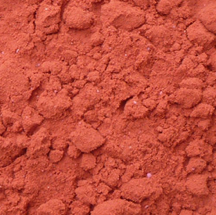Quebracho Extract
| Infobox on Quebracho Extract | |
|---|---|
| Example of Quebracho Extract |  |
| Facts | |
| Origin | - |
| Stowage factor (in m3/t) | 2,26 m3/t (bags) |
| Humidity / moisture | - |
| Ventilation | - |
| Risk factors | See text |
Quebracho Extract
Description
Quebracho produces tannins that can be extracted in quebracho sawmills from the heartwood of both red and white quebracho . Logs are inserted into planers to produce chips that are used to produce the quebracho extract by boiling them into vats. It is used for fine leather tanning and imparts a red-brown colour. Ordinary or warm soluble quebracho (also known as insoluble Quebracho) is the natural extract obtained directly from the quebracho wood. This type of extract is rich in condensed tannins of natural high molecular weight (phlobaphenes), which are not easily soluble. Its use is therefore limited to addition of small amounts during the process of tanning leather intended for shoe soles in hot liquids (temperature above 35°C) to improve the yield and the water-proofness of the leather. The cold soluble extracts are obtained by subjecting the ordinary extract to a sulphiting process which transforms the phlobaphenes into completely soluble tannins. The cold soluble quebracho extracts are the most universally known and used types. The chemical structure of these extracts can be described as polymers of epicatechin. The main properties of these extracts are: a very rapid penetration, a high tannin content and a relatively low percentage of non-tannins. The rather low acid and medium salt content characterise them as mild tanning extracts (low astringency). Quebracho tannins give an important added value to the quality of leathers, such as vacchetta, belts and garments, making them more compact and tear resistant with a pleasant touch. The sulphited quebracho extract may be carcinogenous in mice. Other recent studies show that quebracho tannins present a strong anti-mutagenic activity. The heartwood contains from 20 to 30 percent tannin and 3 or 4 percent water-soluble nontannin. It is said to not ferment.
Shipment / Storage / Risk factors
Shipped in powder form in bags. If subjected to heat may arrive with packing rotted, contents damp and bags often sticking together. Contamination by water will solidify the commodity.











